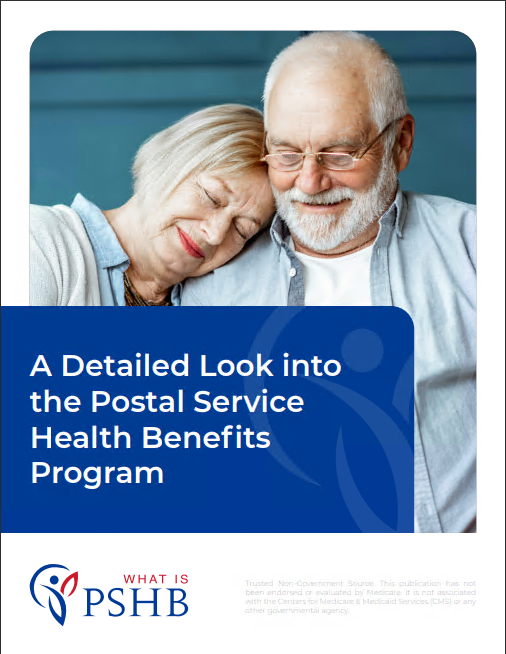Key Takeaways
-
The transition from FEHB to PSHB is now in effect for postal employees and retirees, requiring action to ensure uninterrupted health coverage.
-
Understanding enrollment periods, Medicare integration, plan benefits, and cost-sharing details will help you make informed choices about your healthcare plan.
-
Failing to enroll on time could lead to increased costs, delayed coverage, or lapses in benefits.
-
Comparing different PSHB plans thoroughly will help you choose the best coverage based on your medical needs and financial situation.
-
Retirees who integrate Medicare with PSHB often experience lower out-of-pocket costs, making it a crucial step in retirement planning.
Making Sense of the PSHB Transition
The shift from the Federal Employees Health Benefits (FEHB) Program to the Postal Service Health Benefits (PSHB) Program has officially taken place in 2025. If you’re a postal employee or retiree, this change directly affects your health coverage. It is essential to understand how the transition impacts your options, how to enroll, and what steps to take to ensure you have the best possible healthcare plan.
Understanding PSHB ensures that you avoid unnecessary costs, maintain uninterrupted coverage, and make the most of available benefits. This guide covers key deadlines, Medicare integration, benefit structures, and cost-sharing details to keep you informed and prepared.
1. Enrollment Deadlines and Requirements: Stay on Schedule
You can’t afford to miss important deadlines when it comes to your health coverage. The PSHB program follows specific enrollment periods, which dictate when you can make changes to your plan and how long you have to make selections.
Understanding the Open Season Period
Each year, Open Season runs from November 11 to December 13. This is the window where you can enroll, switch plans, or make adjustments to ensure you have the best coverage for your needs. If you don’t take action during this time, your current PSHB plan will automatically renew unless you experience a qualifying life event (QLE) that allows changes outside of Open Season.
What If You Miss Open Season?
If you miss Open Season, you generally cannot make changes to your health plan unless you qualify for a Special Enrollment Period (SEP) due to a life event such as marriage, divorce, the birth of a child, or a loss of other coverage. Qualifying for an SEP allows you to make necessary adjustments to your healthcare plan outside of the typical Open Season timeframe.
Why Enrollment Timing Matters
Failing to enroll on time or selecting a plan without considering your long-term needs can lead to unnecessary out-of-pocket expenses or even a lapse in coverage. If you’re approaching retirement, you should start reviewing your options well in advance to ensure a seamless transition. Additionally, active employees should regularly review their plan selections to ensure their current health coverage aligns with their needs.
2. Medicare and PSHB: Understanding the Connection
If you’re a retired postal worker or close to retirement, Medicare enrollment is a major factor in your health coverage. The integration between PSHB and Medicare Part B affects how much you pay in premiums, out-of-pocket costs, and overall benefits.
Who Needs to Enroll in Medicare?
-
If you retired on or before January 1, 2025, Medicare enrollment is optional, but it can still reduce your healthcare costs significantly.
-
If you retire after January 1, 2025, you must enroll in Medicare Part B to remain eligible for PSHB coverage once you become Medicare-eligible.
-
If you are still working past age 65, you can delay Medicare Part B enrollment without penalty, but you must sign up once you retire.
How Medicare Affects Your PSHB Coverage
Enrolling in Medicare Part B allows you to access enhanced benefits under your PSHB plan, such as lower copayments, reduced deductibles, and more comprehensive coverage. Many PSHB plans coordinate benefits with Medicare to minimize out-of-pocket expenses, making it a valuable addition to your healthcare strategy.
3. What’s Covered Under PSHB? Know Your Benefits
PSHB plans continue to provide comprehensive healthcare coverage, including:
-
Preventive Care Services – Routine check-ups, vaccinations, and screenings.
-
Hospital and Emergency Care – Inpatient and outpatient care, including ER visits.
-
Prescription Drug Coverage – PSHB enrollees who are Medicare-eligible are automatically enrolled in a Medicare Part D Employer Group Waiver Plan (EGWP).
-
Specialist Visits and Treatments – Coverage for seeing specialists and receiving necessary treatments.
-
Mental Health Services – Counseling, therapy, and psychiatric care.
-
Maternity and Family Planning Services – Including prenatal care, delivery, and postnatal care.
-
Rehabilitative and Physical Therapy – Coverage for physical therapy and post-surgical rehabilitation.
-
Vision and Dental Benefits – Some PSHB plans may include limited coverage for vision and dental services.
Out-of-Pocket Costs: What to Expect
While premiums are shared between the enrollee and the federal government, you’ll still have deductibles, copayments, and coinsurance. These costs vary by plan, so reviewing your options carefully is crucial to selecting the most cost-effective coverage.
How to Compare Plans for the Best Coverage
With multiple PSHB options available, it’s crucial to compare plans based on:
-
Premium costs – The portion of the monthly premium you must pay.
-
Deductibles – How much you pay before coverage kicks in.
-
Copayments and coinsurance – The out-of-pocket costs per service.
-
Provider networks – Ensuring your doctors and facilities are covered.
-
Extra benefits – Additional offerings such as wellness programs and telehealth options.
4. Retirees and Active Employees: What You Need to Do Now
Whether you’re an active postal employee or retired, your next steps depend on your current status and health coverage needs. Preparing early can help you avoid costly mistakes and ensure you’re making the best healthcare decisions.
If You’re an Active Postal Employee
-
Review available PSHB plans to ensure they meet your needs.
-
If you’re nearing retirement, consider enrolling in Medicare Part B once eligible.
-
Take action during Open Season to ensure seamless coverage.
-
Confirm if any changes in coverage affect your dependents.
If You’re a Retiree
-
Ensure you’re enrolled in Medicare Part B if required.
-
Verify how your current PSHB plan coordinates with Medicare.
-
Keep an eye on any notifications regarding your coverage and costs.
-
Evaluate whether additional coverage, such as dental or vision insurance, is needed.
Tips to Maximize Your Benefits
-
Regularly review your plan to ensure it still meets your needs.
-
Take advantage of preventive care benefits.
-
Keep track of enrollment deadlines to avoid coverage gaps.
-
Utilize available resources, such as customer support and plan comparison tools.
The Future of Your Postal Health Benefits
The transition to PSHB may seem overwhelming, but staying informed about key deadlines, Medicare integration, and available benefits will help you make the best decisions for your healthcare needs. Take the time to review your plan annually and adjust as necessary.
Need help navigating your PSHB options? Get in touch with a licensed agent listed on this website to explore your best coverage options and ensure you’re on the right track.






